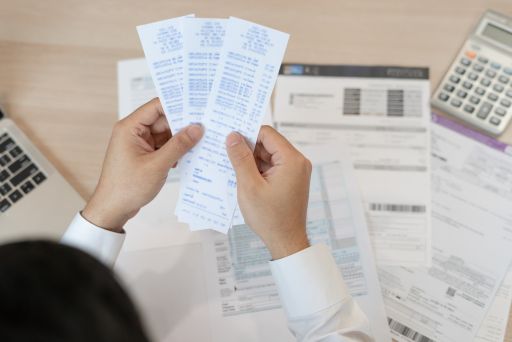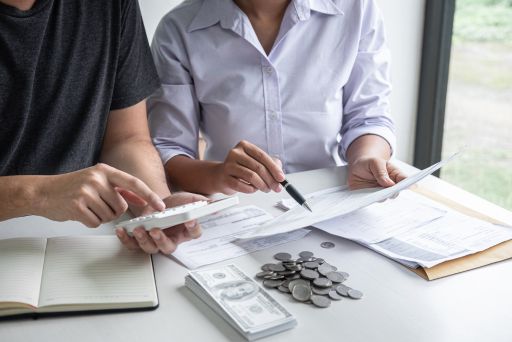
In the realm of accounting, bad debt expense represents an unavoidable reality for businesses extending credit to customers. Understanding how to calculate bad debt expense is crucial for financial health and accurate reporting. This guide demystifies the process, covering various methods and essential concepts.
What is a Bad Debt Expense?
Bad debt occurs when customers fail to pay outstanding invoices, leading to uncollectible accounts. Bad debt expense reflects the amount a company anticipates losing due to non-payment. It’s an essential component in estimating financial health and ensuring accurate financial statements.
What Causes Bad Debt?
Bad debt arises from various factors, including financial hardships, communication breakdowns, and disputes. For instance, if a customer declares bankruptcy, they may default on their invoice, leading to the amount becoming bad debt. Similarly, unclear loan terms can result in partial or complete loss of debt due to misinterpretation. Additionally, situations may arise where a client has the ability to settle an invoice but chooses not to. For example, in a scenario where a flower business delivers wilted bouquets for a conference, prompting the client to withhold payment, the resulting unpaid receivable qualifies as a bad debt expense.
Importance of Calculating Bad Debt Expense
Accurately calculating bad debt expense aids in:
- Assessing financial health: Identifying potential losses from uncollectible accounts helps gauge a business’s financial stability.
- Budgeting and forecasting: Anticipating bad debt allows for more precise financial planning.
- Compliance: Properly accounting for bad debt ensures adherence to accounting standards and regulatory requirements.
Methods to Calculate Bad Debt Expense
1. Allowance Method
The allowance method is a commonly used approach to estimate bad debt. It involves creating an allowance for doubtful accounts to offset accounts receivable. The bad debt expense is recorded by adjusting the allowance account.
2. Direct Write-Off Method
The direct write-off method is straightforward but less accurate. It involves recording bad debt expenses when they occur, directly reducing accounts receivable. However, it doesn’t adhere to accrual accounting principles and can distort financial statements.

Steps to Calculate Bad Debt Expense
1. Assess Historical Data
Review past bad debt experiences to identify patterns and trends. Historical data provides insights into the likelihood of non-payment and guides future estimations.
2. Estimate Uncollectible Amount
Based on historical data and other factors like industry norms and economic conditions, estimate the percentage of bad debt within accounts receivable.
3. Calculate Bad Debt Expense
Apply the estimated percentage of bad debt to the total accounts receivable balance to determine the expected bad debt expense for the period.
Factors Influencing Bad Debt Expense
1. Extending Credit
The decision to extend credit to customers directly impacts bad debt expense. Credit policies and terms should be carefully crafted to minimize the risk of non-payment.
2. Customer Payment Behavior
Monitoring customer payment patterns and addressing late payments promptly can mitigate bad debt risk. Implementing credit checks and collection strategies helps manage receivables effectively.
3. Economic Conditions
Economic fluctuations can affect customer creditworthiness and increase the likelihood of bad debt. Monitoring market trends and adjusting credit policies accordingly is essential.
Recording Bad Debt Expense
1. Journal Entry
When recording bad debt, debit the bad debt expense account and credit the accounts receivable or allowance for doubtful accounts. This adjustment reflects the anticipated loss from uncollectible accounts.
2. Impact on Financial Statements
Recording bad debt expense affects the income statement by reducing net income and matching expenses with revenues. It also impacts the balance sheet by decreasing accounts receivable and reflecting the net realizable value.

Accurately calculating bad debt expense is vital for financial planning and reporting accuracy. By understanding the methods, factors, and recording procedures associated with bad debt expense, businesses can manage risk effectively and maintain financial stability. Implementing sound credit policies and monitoring receivables diligently are key to minimizing bad debt and ensuring long-term success.
FAQs on Calculating Bad Debt Expense
1. What is a Bad Debt Expense?
Bad debt expense represents the amount a company anticipates losing due to non-payment of outstanding invoices by customers. It reflects uncollectible accounts and is essential for assessing financial health and accurate reporting.
2. What Causes Bad Debt?
Bad debt arises from various factors such as financial hardships, communication breakdowns, disputes, and bankruptcy. Unclear loan terms or dissatisfaction with delivered goods or services can also lead to non-payment and qualify as bad debt.
3. Why is Calculating Bad Debt Expense Important?
Calculating bad debt expense is crucial for assessing financial health, budgeting, forecasting, and compliance with accounting standards. It helps businesses gauge potential losses, plan finances accurately, and adhere to regulatory requirements.
4. What Methods are Used to Calculate Bad Debt Expense?
Two primary methods are used: the allowance method and the direct write-off method. The allowance method involves creating an allowance for doubtful accounts to offset accounts receivable, while the direct write-off method records bad debt expenses as they occur, directly reducing accounts receivable.
5. How is Bad Debt Expense Recorded?
Bad debt expense is recorded through a journal entry, debiting the bad debt expense account and crediting either accounts receivable or the allowance for doubtful accounts. This adjustment reflects the anticipated loss from uncollectible accounts and impacts both the income statement and the balance sheet.

